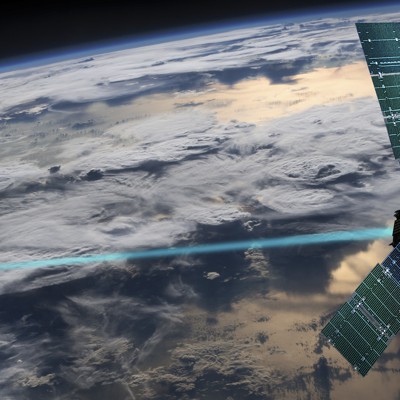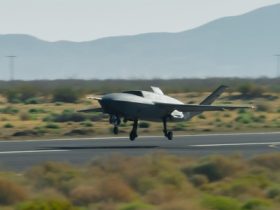HUNTSVILLE, Ala.— With hundreds of billions of dollars potentially at stake, weapons maker Lockheed Martin said Monday it hopes to achieve a historic first: the test of a satellite weapon capable of destroying a highly maneuverable hypersonic weapon, within the next three years.
The concept is perhaps the most pivotal and ambitious portion of the Golden Dome missile defense shield plan, though Pentagon leaders are still considering key aspects of the shield’s overall architecture and few details are known about what it will look like. Gen. Michael Guetlein, confirmed recently to lead the effort for the Defense Department, said he would provide updated guidance to industry within the next 60 days. That guidance is expected to lay out more specifics of what the Pentagon wants industry to provide, without burdening them with overly specific requirements.
Regardless, the shield is likely to feature space-based interceptors, satellites designed to destroy adversary missiles before they hit their target.
Amanda Pound, the advanced programs development director at Lockheed Martin, told reporters Monday at the company’s facility here that it is pursuing a variety of missile-killing satellite ideas, from lasers to satellites that turn into projectiles and maneuver toward hard-to-hit missiles.
“The goal is by 2028 to field an on-orbit demonstration of a space-based interceptor,” she said. “We have the capability to do that. We’re ready to support.”
The concept of space-based missile-killers dates back to the 1960s and a U.S. Air Force concept called ballistic missile boost intercept, or BAMBI, but that project was canceled in 1963 due to cost concerns. In the 1980s, the Reagan administration famously revisited the idea by launching the Strategic Defense Initiative, or Star Wars. A key concept to emerge from the effort was Brilliant Pebbles, a constellation of satellites designed to fire small missiles at much larger enemy missiles to destroy them. Star Wars was canceled in 1994, but since then, China and Russia have both deployed hypersonic missiles that can maneuver in ways nearly impossible for today’s interceptors to defeat. Both countries also have deployed space-based weapons. Russia has even used highly maneuverable hypersonics in conflict—and has seen them shot down.
While disagreements regarding the cost and feasibility of various aspects of the Golden Dome concept remain, there is broad recognition that the United States faces a far more threatening missile defense environment than it did a few years ago.
Old concepts are receiving a fresh look. One key contributor to Brilliant Pebbles was Martin Marietta, which merged with Lockheed Corporation in 1995 to become Lockheed Martin. Yet despite the company’s history, it faces stiff competition from the much younger SpaceX, which is able to build and launch large numbers of satellites more affordably than any other company. SpaceX is considered the front-runner in the Golden Dome competition but, for a variety of reasons, not exactly the favorite (at least not in the eyes of the White House.)
But Lockheed Martin has a strategy to remain competitive.
Monday, company executives highlighted the complex role the business plays in U.S. missile defense, including various programs that are less flashy than space-based missile killers but likely to play a larger role in any comprehensive missile defense scheme, such as ground-based radars, space-based missile tracking, and new missiles launched from land, sea, and air.
Executives also stressed the value of various systems including Terminal High Altitude Area Defense; PAC-3 missiles; Next-Generation Interceptors; and satellites capable of detecting missile launches through thermal signatures., and outlined plans to better integrate these elements through new command-and-control concepts.
Lockheed also said they have completed a new “prototyping hub” designed to virtually test advanced concepts for space-based missile defense, including emerging technologies from partners or smaller developers. The idea: getting the elements of U.S. missile defense—from ground to sea to air—working better together offers more value, and stronger defense, than relying solely on space-based interceptors.
Company executives said they are happy to work with a variety of partners on the project, and don’t view the competition as winner-take-all.
Pound explained: “I believe, based on the sheer numbers they’re asking about, it’s going to take more than just one big prime [defense contractor]. It might take multiples of us, as well as a lot of the rest of the industry.”
Read the full article here








Leave a Reply